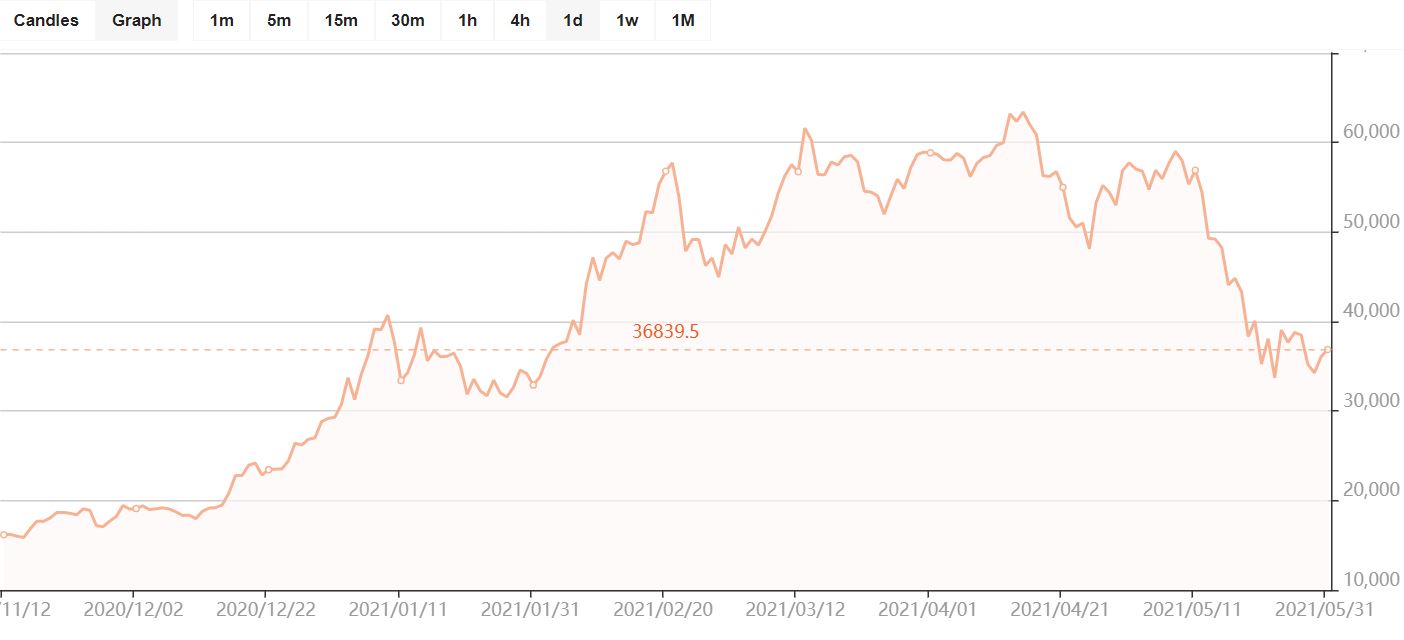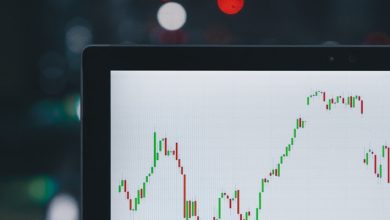Seasonal Trends in Cryptocurrency Markets

- Understanding the Impact of Seasonal Trends on Cryptocurrency Prices
- Analyzing Historical Data to Identify Patterns in Seasonal Cryptocurrency Trends
- How Seasonal Changes Affect Investor Behavior in the Cryptocurrency Market
- Exploring the Relationship Between Seasonal Events and Cryptocurrency Market Volatility
- Strategies for Capitalizing on Seasonal Trends in Cryptocurrency Trading
- The Role of Seasonal Factors in Shaping the Future of Cryptocurrency Markets
Understanding the Impact of Seasonal Trends on Cryptocurrency Prices
Understanding the impact of seasonal trends on cryptocurrency prices is crucial for investors looking to make informed decisions in the market. By analyzing historical data, it becomes evident that cryptocurrencies tend to exhibit certain patterns during different times of the year. These trends can be influenced by a variety of factors, including market sentiment, regulatory developments, and macroeconomic conditions.
One common seasonal trend in the cryptocurrency market is the so-called “January effect,” where prices tend to rise at the beginning of the year. This phenomenon is believed to be driven by investors buying back into the market after selling off assets for tax purposes at the end of the previous year. As a result, January often sees an uptick in trading volume and price appreciation for many cryptocurrencies.
On the other hand, the summer months have historically been a period of relative stagnation or even decline in cryptocurrency prices. This can be attributed to reduced trading activity as investors take vacations and markets experience lower liquidity. Additionally, regulatory uncertainty and negative news headlines during the summer can contribute to downward pressure on prices.
It is important for investors to be aware of these seasonal trends and factor them into their trading strategies. By understanding how prices tend to move during different times of the year, investors can position themselves to take advantage of potential opportunities or mitigate risks. However, it is essential to remember that past performance is not indicative of future results, and market conditions can change rapidly.
Analyzing Historical Data to Identify Patterns in Seasonal Cryptocurrency Trends
One effective way to gain insights into seasonal trends in cryptocurrency markets is by analyzing historical data to identify patterns. By examining past price movements and market behavior, analysts can uncover recurring trends that may provide valuable information for making informed investment decisions.
**Historical data analysis** can reveal trends such as price fluctuations during certain times of the year, increased trading volume during specific months, or patterns related to market sentiment. By identifying these patterns, investors can potentially anticipate market movements and adjust their trading strategies accordingly.
For example, some cryptocurrencies may experience a surge in price leading up to major holidays or events, while others may see a dip in value during certain seasons. By recognizing these trends, investors can capitalize on potential opportunities or mitigate risks associated with seasonal fluctuations.
Additionally, analyzing historical data can help investors understand the underlying factors driving seasonal trends in cryptocurrency markets. For instance, regulatory changes, technological developments, or macroeconomic events may influence market behavior during specific times of the year.
Overall, leveraging historical data to identify patterns in seasonal cryptocurrency trends can provide valuable insights for investors looking to navigate the volatile and dynamic nature of the digital asset market. By staying informed and adapting to changing market conditions, investors can position themselves for success in the ever-evolving world of cryptocurrencies.
How Seasonal Changes Affect Investor Behavior in the Cryptocurrency Market
Investors in the cryptocurrency market are often influenced by seasonal changes, which can impact their behavior and decision-making processes. Understanding how these seasonal trends affect investor behavior is crucial for anyone looking to navigate the volatile cryptocurrency market successfully.
One way in which seasonal changes affect investor behavior in the cryptocurrency market is through the concept of “FOMO,” or fear of missing out. During certain times of the year, such as the holiday season or tax season, investors may feel pressured to buy or sell cryptocurrencies based on market trends or social media hype. This can lead to impulsive decision-making and increased market volatility.
Additionally, seasonal changes can also impact the overall sentiment of the market. For example, during the summer months when trading volumes tend to be lower, investors may be more cautious and risk-averse. On the other hand, during the winter months when trading volumes are typically higher, investors may be more willing to take on greater risks in search of higher returns.
It is essential for investors to be aware of these seasonal trends and how they can influence market dynamics. By staying informed and being mindful of how seasonal changes can affect investor behavior, individuals can make more informed decisions when trading cryptocurrencies. Ultimately, understanding the impact of seasonal changes on investor behavior can help investors navigate the cryptocurrency market more effectively and potentially capitalize on market opportunities.
Exploring the Relationship Between Seasonal Events and Cryptocurrency Market Volatility
Cryptocurrency market volatility is a topic of interest for many investors and analysts. One area that has been gaining attention is the relationship between seasonal events and fluctuations in the cryptocurrency market. Seasonal trends can have a significant impact on market behavior, leading to increased volatility during certain times of the year.
**One** key seasonal event that has been linked to cryptocurrency market volatility is the holiday season. During this time, there is typically an increase in trading activity as investors react to market conditions and news. This heightened activity can lead to greater price fluctuations and volatility in the market.
**Another** seasonal event that can impact cryptocurrency market volatility is tax season. As investors prepare to file their taxes, they may be more inclined to sell off their assets to cover any tax liabilities. This selling pressure can lead to increased volatility in the market as prices fluctuate in response to the increased supply of cryptocurrencies.
**Additionally**, major global events such as geopolitical tensions or economic crises can also influence cryptocurrency market volatility. These events can create uncertainty in the market, leading to increased trading activity and price fluctuations. As a result, investors may see greater volatility in the cryptocurrency market during these times.
**In** conclusion, seasonal events play a significant role in shaping cryptocurrency market volatility. By understanding the relationship between these events and market behavior, investors can better prepare for potential fluctuations in the market. It is important to stay informed about upcoming seasonal events and how they may impact the cryptocurrency market to make informed investment decisions.
Strategies for Capitalizing on Seasonal Trends in Cryptocurrency Trading
When it comes to capitalizing on seasonal trends in cryptocurrency trading, there are several strategies that traders can employ to maximize their profits. By understanding the patterns that tend to emerge during certain times of the year, investors can make more informed decisions about when to buy and sell their digital assets.
One strategy that traders can use is to pay close attention to historical data and trends. By analyzing past performance during specific seasons, traders can identify patterns that may repeat in the future. This can help them anticipate market movements and make more accurate predictions about when to enter or exit trades.
Another strategy is to diversify your portfolio to take advantage of different seasonal trends in various cryptocurrencies. By spreading your investments across multiple assets, you can reduce your risk exposure and increase your chances of profiting from different market conditions. This can help you take advantage of opportunities in both bullish and bearish markets.
Additionally, traders can use technical analysis tools to identify potential entry and exit points based on seasonal trends. By using indicators such as moving averages, RSI, and MACD, traders can pinpoint optimal times to buy or sell cryptocurrencies. This can help them make more strategic decisions and maximize their profits.
Overall, by leveraging these strategies and staying informed about seasonal trends in cryptocurrency markets, traders can increase their chances of success and profitability. It’s important to remain disciplined and patient, as trading based on seasonal trends requires a long-term perspective and a willingness to adapt to changing market conditions.
The Role of Seasonal Factors in Shaping the Future of Cryptocurrency Markets
Cryptocurrency markets are influenced by a variety of factors, including seasonal trends. Understanding the role of seasonal factors can provide valuable insights into the future direction of these markets.
One key seasonal factor that shapes the cryptocurrency market is the holiday season. During this time, there is typically increased interest and activity in the market as people have more free time to research and invest in cryptocurrencies. This can lead to higher trading volumes and price fluctuations as investors buy and sell based on market sentiment.
Another seasonal factor to consider is the tax season. As tax deadlines approach, investors may be more inclined to sell off their holdings to cover any tax liabilities. This can result in downward pressure on prices as selling activity increases.
Additionally, the summer months have historically been a slower period for the cryptocurrency market. With many people on vacation and less overall market activity, prices may stagnate or even decline during this time.
Overall, seasonal factors play a significant role in shaping the future of cryptocurrency markets. By understanding and analyzing these trends, investors can make more informed decisions about when to buy, sell, or hold their assets.



